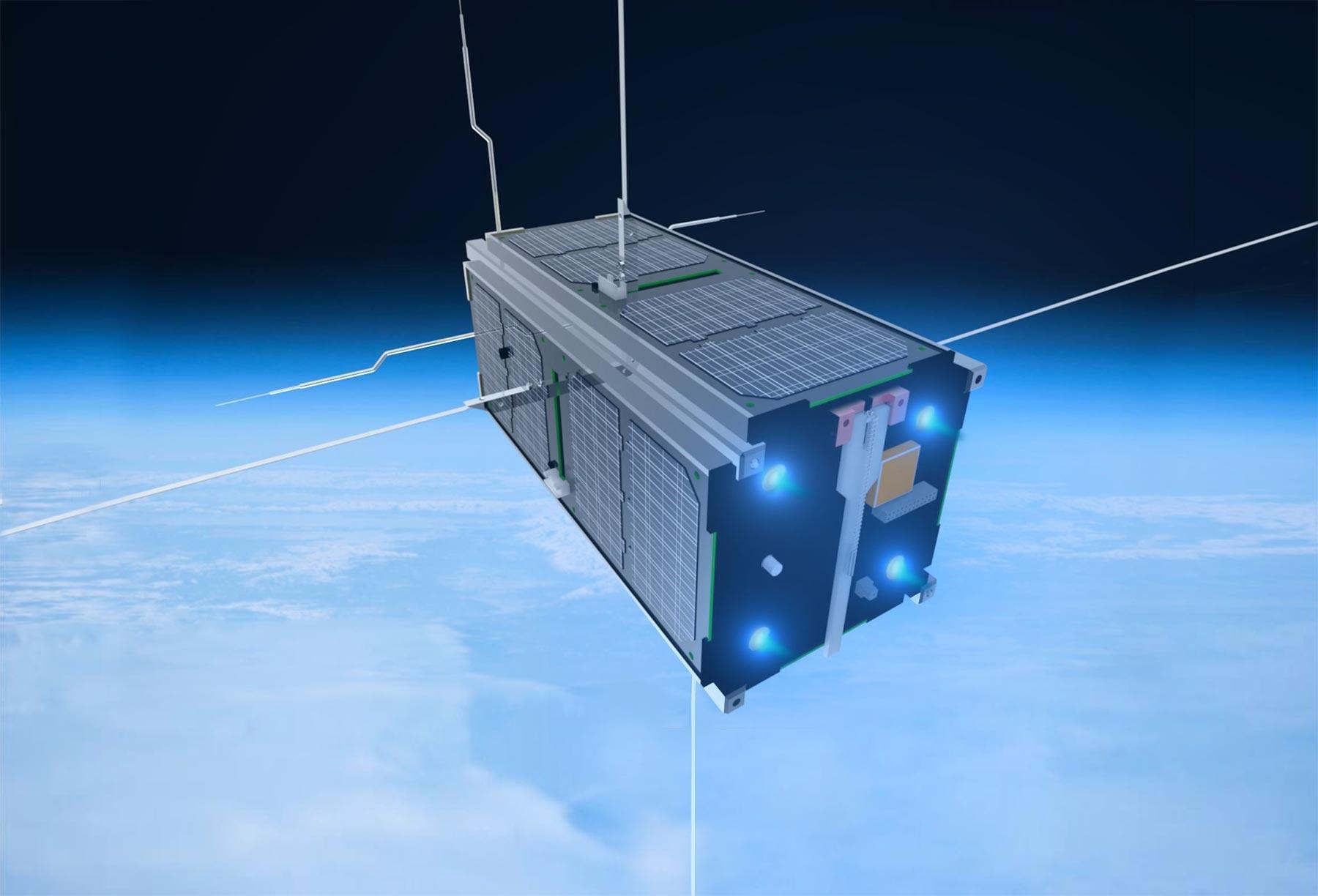PEGASUS, a nanosatellite developed by Austrian scientists at the Aerospace Engineering Programme of the University of Applied Sciences Wiener Neustadt and by FOTEC, a subsidiary research company of the University. It is Austria’s contribution to the QB50 project, funded through the 7th Framework Programme (FP7) of the European Commission. PEGASUS was launched in 2017 and continues its measuring of the density and temperature of the atmosphere. This data is used for weather and climate determination. This Austrian nanosatellite is an important contribution to space research and aerospace engineering education.
Bernhard Seifert and Carsten Scharlemann, 13 April 2022
The history of Austrian nanosatellites dates back to 2013 when TUGSAT-1 and UniBRITE, developed by the Graz University of Technology and part of the of the BRITE (BRIght-star Target Explorer) constellation, were launched and successfully commissioned. The first idea to develop an Austrian nanosatellite at the University of Applied Sciences Wiener Neustadt (Fachhochschule Wiener Neustadt FHWN) also dates back to 2013.
In 2011 the QB50 project, funded under the European Commission’s 7th Framework Programme (FP7), was started. The idea behind this project was the establishment of an international network of 50 CubeSats dedicated to the multi-point and in-situ measurement of certain properties of the lower thermosphere define as well as re-entry research. Three different scientific payloads were provided by research institutes and universities to the project teams for integration into their nanosatellite: (i) a mass spectrometer to measure the heavy particles in the thermosphere such as O, O2, NO or N2; (ii) gas sensors optimized for operation in ultra-low-pressure regimes and (iii) multi-needle Langmuir probes to determine the electron density and electron temperature.
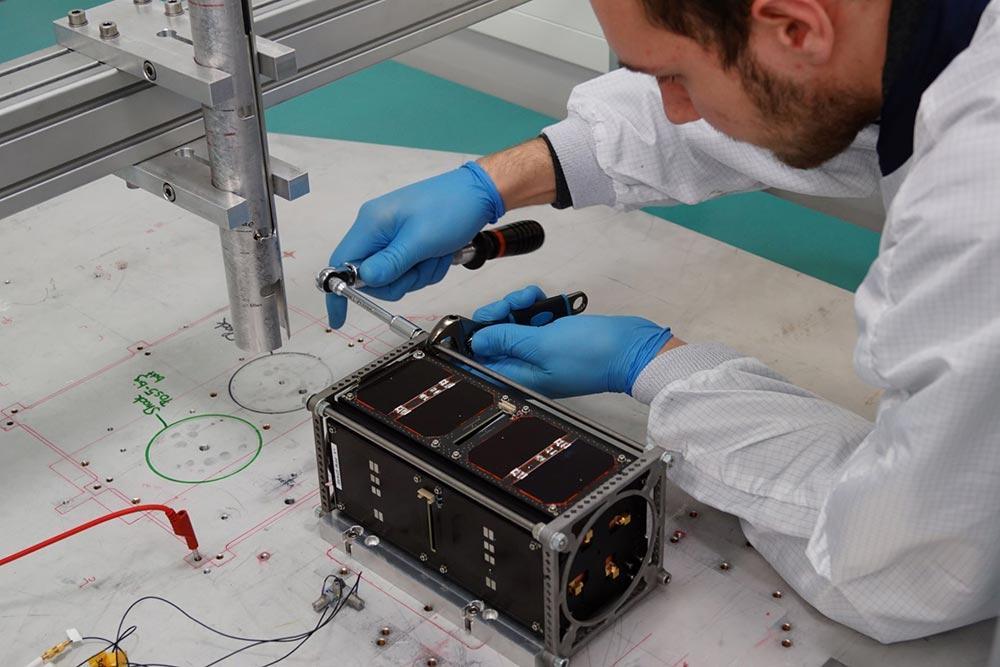 Working on PEGASUS. © FH Wiener Neustadt
Working on PEGASUS. © FH Wiener Neustadt
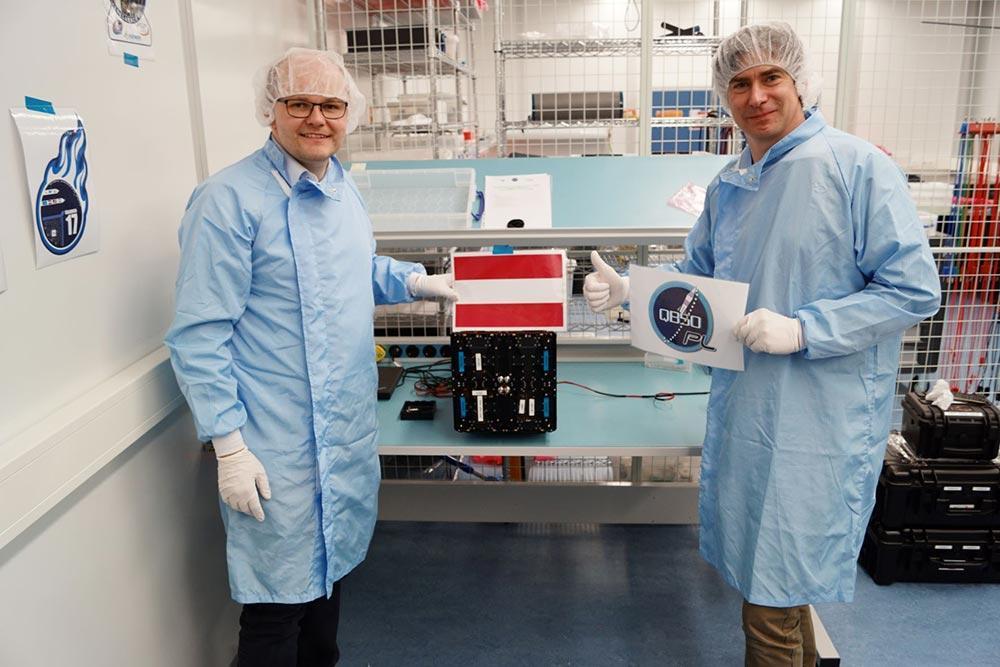
Dr. Reinhard Schnitzer (left) and Dr. Carsten Scharlemann (right) during the transfer of PEGASUS to ISISpace Group in the Netherlands. © FH Wiener Neustadt
While a better understanding of the lower thermosphere would be important for the development of more detailed climate models, there is insufficient in-situ data currently available. Owing to the low altitude of the mid-lower thermosphere, which spans altitudes between 300 and 450 km, it is not worth launching heavy and expensive scientific satellites into such low orbits, as they would decay within a few years because of atmospheric drag. The goal of the QB50 program was to close this knowledge gap by launching not only one but up to 50 nanosatellites to allow a multitude of in-situ measurements over several years.
In 2013 the FHWN was asked to develop its own CubeSat to be part of the QB50 constellation. The Aerospace Engineering Masters Programme was established in 2012 and, with the knowledge gained from various CubeSat workshops in recent years, this request was gladly accepted. Although FOTEC, and previously AIT (Austrian Institute of Technology), had provided liquid metal ion sources for a variety of ESA, NASA and JAXA scientific flight missions – such as AUSTROMIR, GEOTAIL, CLUSTER, ROSETTA or DOUBLESTAR – they had up to that time only limited experience on satellite-level development.
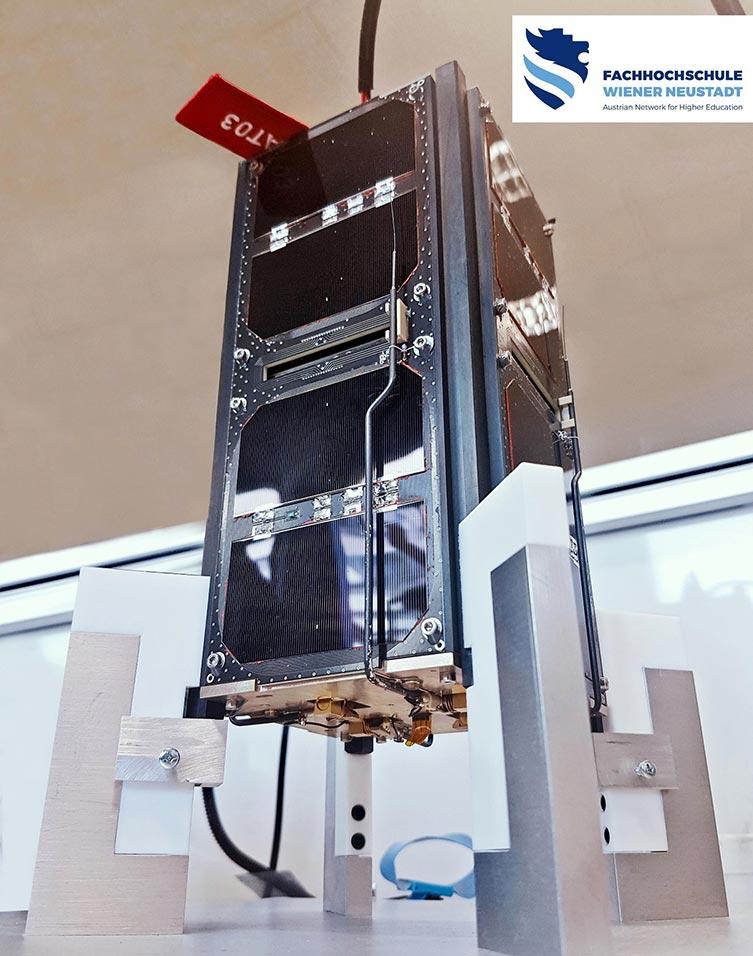
PEGASUS – QB50 Austrian Nanosatellite © FH Wiener Neustadt
Compared to commercial telecom or scientific satellites with the size of a car, nanosatellites and in particular CubeSats are significantly smaller in mass and volume – PEGASUS measures only 20 x 10 x 10 cm. Nevertheless, even such small satellites need to incorporate a minimum set of systems, such as the OBC (onboard computer), TT&C (transceiver) with deployable antennas, EPS (electric power system) with solar cells and batteries, ADCS (attitude determination and control system) and the scientific payload itself: the previously mentioned multi-needle Langmuir probes to serve the actual purpose of the mission. It is obvious that with these stringent restrictions in terms of volume, weight (c. 2 kg) and the available average electrical power of a few watts, a large number of hurdles had to be overcome. Apart from the primary goals specified by the QB50 project management, FHWN defined its own secondary goals, namely, to involve students in the design, development, manufacturing and testing process and to limit the number of components to be purchased from third parties.
Since the project was not well funded for future work, much voluntary work was necessary. As any project starts, one of the first tasks was the composition of the project team to bring in the required expertise and to share the workload. Apart from the FHWN, the project team consisted of the Spaceteam (Vienna University of Technology), the Space Tech Group (amateur radio operators from the University of Vienna) and various students from different faculties. Although the “New Space” approach, where the focus is laid on fast and cheap developments, was used within the QB50 project, still a variety of requirements had to be fulfilled by all teams and their nanosatellites. From a systems engineering point of view, a classical top-to-bottom approach was chosen to develop the mechanical design, electrical interfaces, software architecture and to choose the required systems and components. For all these systems, a set of derived requirements was defined which allowed independent and parallel development – otherwise it would have been impossible to progress from scratch to a FM (flight model) within less than three years.
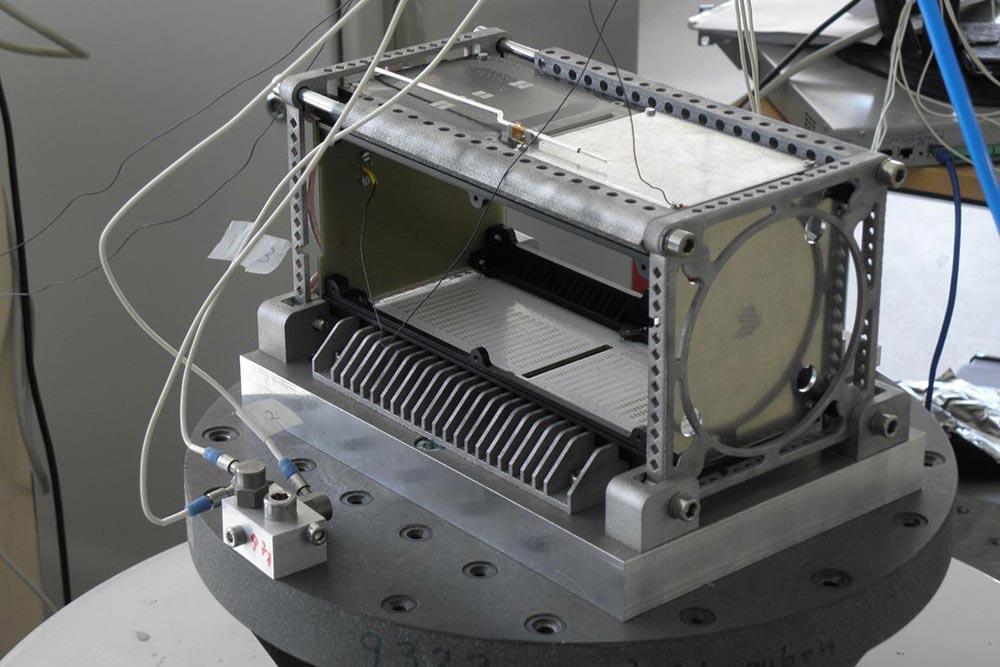
PEGASUS – QB50 Austrian Nanosatellite. © FH Wiener Neustadt
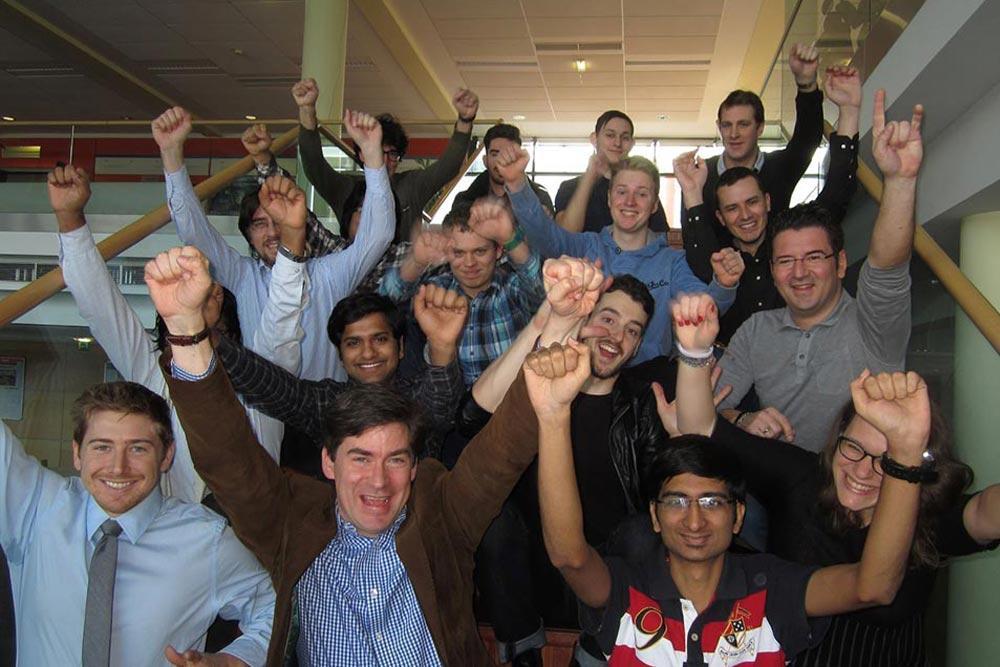
PEGASUS development team at the University of Applied Sciences Wiener Neustadt. © FH Wiener Neustadt
During weekly meetings, critical aspects were discussed such as the trade-off between autonomy and telecommand from the ground, basically meaning how much “intelligence” should the onboard computer software have. Another issue arose from coupling effects and possible failure propagation – the TT&C had a watchdog feature, meaning that when periodic pings from the OBC stopped, the TT&C would enter a safe mode having the power to take over critical functions from the OBC. Around 20% of the effort was required to develop a system to work under nominal conditions, the remaining 80% was required to “harden” the system in terms of fault tolerance, redundancy, failure propagation containment and safe modes. Most of the used EEE (Electrical, Electronic and Electro-mechanical) components were COTS (Commercial Off the Shelf) meaning that they were not specifically developed or tested for space use. Radiation- and single-event effects in orbit can therefore also compromise the systems of the satellite. Testing, testing, testing – may be the best advice for the development of a satellite. Only tests, and in particular coupling tests, reveal any non-nominal behavior and allow fixes before launch.
In 2017, after several delays and launcher changes, PEGASUS was successfully brought into orbit by an Indian launch vehicle, type PSLV-XL C-38. The initial start sequence – such as the deployment of the antennas and Langmuir probes, performed flawlessly and communication could be established soon after deployment. The commissioning took several months owing to some anomalies observed and their analysis and correction. Most issues could be solved, or work-arounds were implemented.
Following the commissioning phase, the science operation was initiated. With its scientific payload, the spacecraft started to measure the density and temperature of the extremely thin atmosphere at this altitude. Both of these parameters are essential for scientists to understand and predict processes that determine weather and climate. PEGASUS collected these data over a period of several months and the team submitted them to the QB50 consortium for scientific analysis.
Up to 2022, PEGASUS has been operating successfully in orbit, collecting data and still providing a tool for students’ education – one of the primary objectives of the PEGASUS mission.
The next CubeSat mission has been in preparation since 2018. For this mission a new satellite, called CLIMB, is under development. As was the case for PEGASUS, one of the objectives of the mission is to educate students in the design, development and operation of satellites. For this purpose, nearly all the satellite subsystems are developed in-house. The satellite will be placed in a Low Earth Orbit (LEO) and will change its orbit over the course of a year to enter the Van Allen Belt. The propulsion system required to change the orbit was developed by FOTEC and commercialized by FOTEC’s spinoff ENPULSION. Before and after entering the Van Allen Belt, sensors on the satellite will measure the radiation dose rate and monitor the performance of all subsystems. By doing so, a very detailed study of the performance of the satellite subsystems under an extreme radiation environment can be conducted. This again provides essential information for the use of the COTS components in space – an important contribution to the space community and the education of the students.
Further reading:
https://cubesat.fhwn.ac.at/pegasus/
https://spaceteam.at/cubesats/cubesat/
https://space.skyrocket.de/doc_sdat/pegasus_qb50.htm
https://cubesat.fhwn.ac.at/climb
https://www.enpulsion.com/order/nano-r3/
Picture: PEGASUS – QB50 Austrian Nanosatellite depiction in space. © FH Wiener Neustadt


